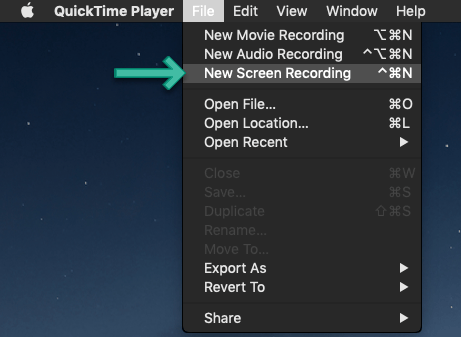How to take a screenshot on your Mac
Note: Applies for Mojave, Catalina and Big Sur. AnyDesk may only receive sessions when Accessibility and Screen Recording permission is granted by the macOS system. Add AnyDesk to trusted apps in order to work correctly. Click Record in the onscreen controls to start capturing your Mac screen. To stop the Mojave screen recording, you can click the Stop Recording button in the menu bar. You can also press Command + Control + Esc to stop the recording process. After the Mojave screen recording, you can use the thumbnail to trim, share, save, or do other operations. So, Apple launched Mojave with a tool specifically for this purpose. So, if you want to know how to record your screen on a Mac with Mojave then follow the steps below: Press 'Command + Shift + 5' on your Mac to open the Screenshot toolbar. You will have two options; you can either 'Record Entire Screen' or 'Record Selected Portion'. Anyway, to make a movie of all or part of your Mac screen, begin by pressing Command +Shift+5. Then click either the Record Entire Screen or Record Selected Portion. Update: macOS 11 Big Sur is realized and we can still record the screen with QuickTime Player with sound for free, it’s almost the same as we do in Catalina, but it gets a bit different from older macOS like Mojave.You will see how it goes here as well. Since QuickTime is 100% compatible with M1 Macs like MacBook Air, Pro, or Mini, it’s 100% working to free record screen with sound on.
- To take a screenshot, press and hold these three keys together: Shift, Command, and 3.
- If you see a thumbnail in the corner of your screen, click it to edit the screenshot. Or wait for the screenshot to save to your desktop.

How to capture a portion of the screen


- Press and hold these three keys together: Shift, Command, and 4.
- Drag the crosshair to select the area of the screen to capture. To move the selection, press and hold Space bar while dragging. To cancel taking the screenshot, press the Esc (Escape) key.
- To take the screenshot, release your mouse or trackpad button.
- If you see a thumbnail in the corner of your screen, click it to edit the screenshot. Or wait for the screenshot to save to your desktop.
How to capture a window or menu
- Open the window or menu that you want to capture.
- Press and hold these keys together: Shift, Command, 4, and Space bar. The pointer changes to a camera icon . To cancel taking the screenshot, press the Esc (Escape) key.
- Click the window or menu to capture it. To exclude the window's shadow from the screenshot, press and hold the Option key while you click.
- If you see a thumbnail in the corner of your screen, click it to edit the screenshot. Or wait for the screenshot to save to your desktop.
Mac Os Mojave Requirements
Where to find screenshots
By default, screenshots save to your desktop with the name ”Screen Shot [date] at [time].png.”

Mac Os Mojave Record Screen With Sound
In macOS Mojave or later, you can change the default location of saved screenshots from the Options menu in the Screenshot app. You can also drag the thumbnail to a folder or document.
Mac Os Mojave Dmg Download
Learn more
Mojave Os Download
- In macOS Mojave or later, you can also set a timer and choose where screenshots are saved with the Screenshot app. To open the app, press and hold these three keys together: Shift, Command, and 5. Learn more about the Screenshot app.
- Some apps, such as the Apple TV app, might not let you take screenshots of their windows.
- To copy a screenshot to the Clipboard, press and hold the Control key while you take the screenshot. You can then paste the screenshot somewhere else. Or use Universal Clipboard to paste it on another Apple device.
